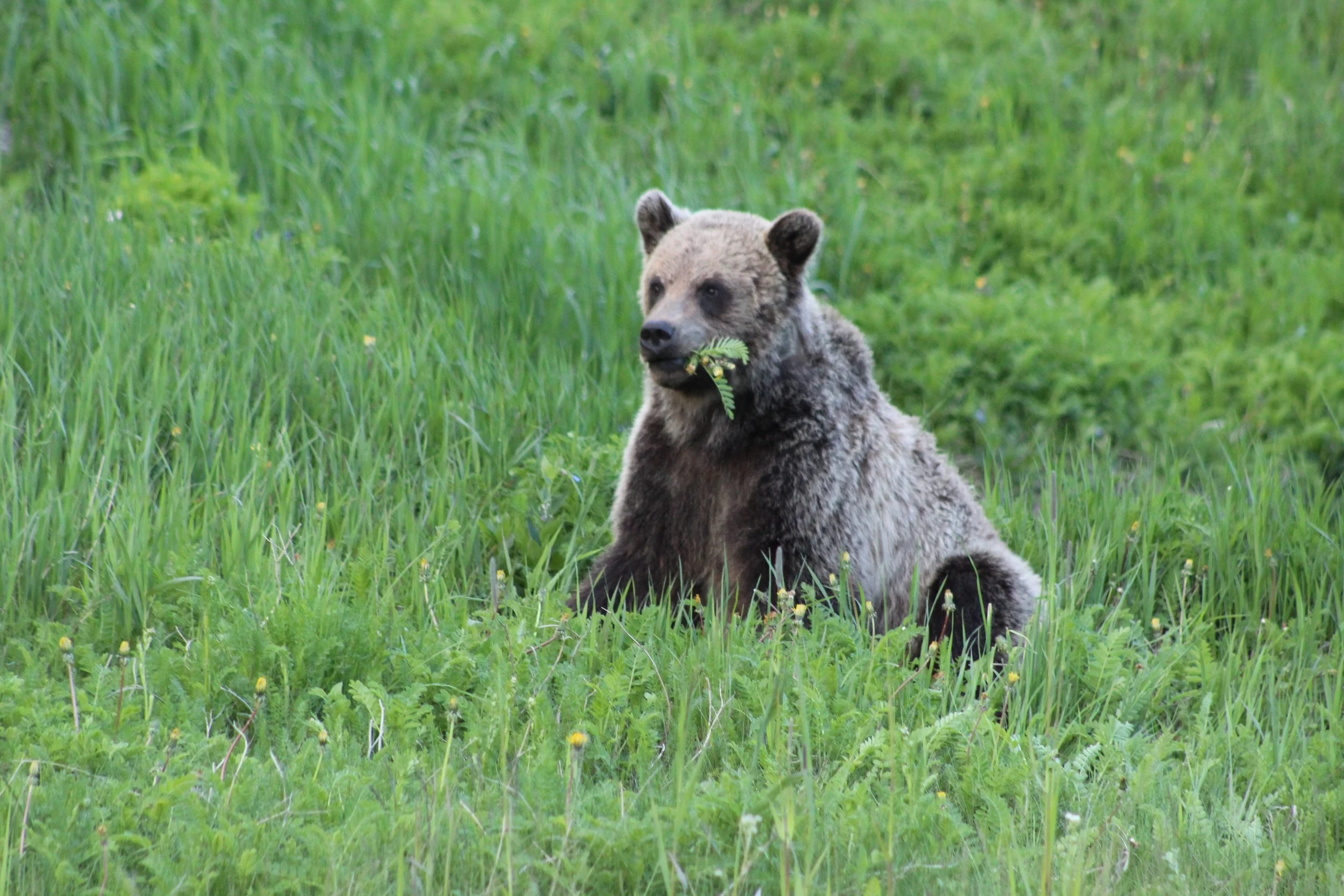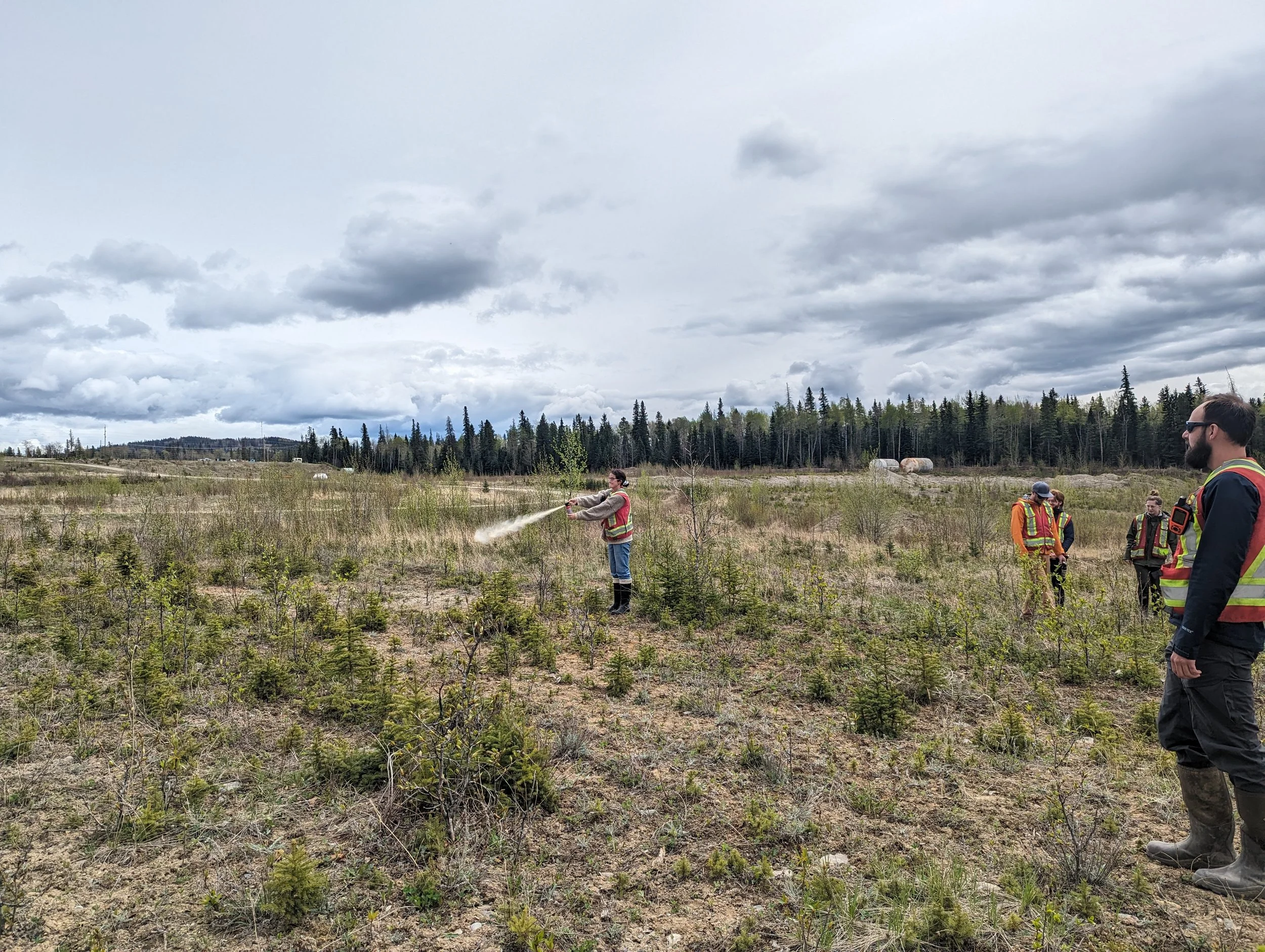Blog Post - Wildlife
A DAY IN THE LIFE OF A BIOLOGIST
Grizzly bear chewing on yellow sweet vetch (hedysarum).
May is a busy time of year for Poseidon: we’re training our new field staff.
It’s also busy for animals: spring has brought life back to the landscape, the song birds have returned, and the bears are out of hibernation, rooting around for new food sources in the lower valleys.
We often see the most wildlife in these first two months of the summer field season and then again in the fall. Our field staff spend roughly 1000 hours each in the field every year! That’s a lot of opportunity to run into wildlife, yet most of the sightings are from the road. A majority of our field experience is spent alone, so it’s important to understand wildlife behavior and signs, and to always have proper PPE.
Here are some of the ways we put safety first in the bush so interactions remain positive.
All of these photos were taken from the safety of the truck.
BEAR SPRAY
Bear spray is a must in the field and everyone carries it on their person. It’s scientifically proven to be an effective defense in mitigating fatal encounters with bears. Each year we start with in-office bear safety and then move onto practical knowledge. This May we practiced deploying expired bear spray - surprisingly, most cans kept pressure quite well. The biggest takeaway lesson was the importance of practicing flipping the safety. Muscle memory is key.
MAKE NOISE
Human voices have been shown to be the most effective at deterring bears — more so than bear bells (dinner bells, as they say), bear bangers, and flares.
WILDLIFE SIGNS
Tracks, scat, bear rubs — these are all things to pay attention to. Fresh grizzly prints at the start of a trail? Maybe we save that site for another day.
Poseidon field staff training with expired bear spray.














